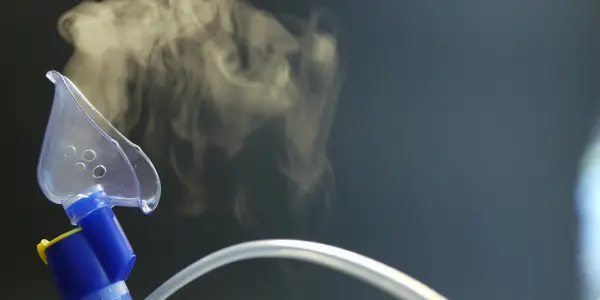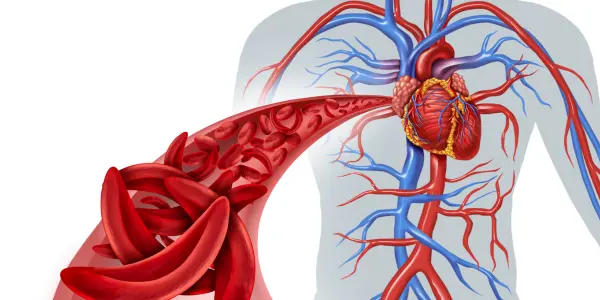
Airway Management in Trauma
Managing airways during trauma is a critical aspect of care at our Trauma Center Hospital, as maintaining a clear and secure airway is essential for proper oxygenation and preventing life-threatening complications. At our hospital, trauma experts follow established protocols to assess and manage the airway effectively in trauma patients, ensuring optimal outcomes.
Our hospital’s trauma team is trained in rapid and precise airway management techniques, ensuring that patients with traumatic injuries receive immediate and effective care to prevent complications like hypoxia, brain damage, or cardiac arrest. Timely and accurate airway management is crucial in the trauma setting, and our multidisciplinary team ensures the best possible outcomes for patients.
Key Steps in Airway Management at Our Trauma Care Centre
Assessment of Airway Patency
The first step is to evaluate whether the patient’s airway is open and clear. Trauma patients may have compromised airways due to facial injuries, bleeding, or loss of consciousness. Immediate assessment of breathing sounds, chest movement, and airway obstruction is done.
Basic Airway Management
In cases where the airway is partially obstructed, basic interventions such as positioning (e.g., head-tilt-chin-lift or jaw thrust), suctioning to clear debris, or the use of oral or nasal airways may be sufficient.
Advanced Airway Management
If the airway cannot be adequately maintained with basic methods, advanced measures such as endotracheal intubation (placing a tube into the trachea) or rapid sequence intubation (RSI) are performed to secure the airway and protect the lungs from aspiration.
Ventilation & Oxygenation
Ensuring proper ventilation is essential. If needed, mechanical ventilation or positive pressure ventilation (via a bag-valve mask or intubation) is used to support breathing and maintain oxygen levels.
Continuous Monitoring
Once the airway is secured, continuous monitoring of oxygen saturation (SpO2), blood gases, and other vital signs is done to assess the effectiveness of airway management and adjust interventions as necessary.
Breathing Management at Our Trauma Care Hospital
In trauma care, managing breathing and circulation is crucial to prevent complications like hypoxia, shock, and organ failure. At our trauma care hospital, the trauma team employs a systematic trauma management approach to address these life-threatening conditions during the immediate stabilization of patients.
Breathing is assessed to ensure adequate oxygenation and ventilation.

The primary steps include:
Assessing Respiratory Effort:
The first step is to evaluate the patient’s ability to breathe. This includes checking for any signs of labored breathing, unequal chest expansion, or cyanosis (bluish skin from lack of oxygen).
Airway Patency:
If the airway is compromised (due to trauma such as facial fractures), immediate interventions like airway repositioning, suctioning, or intubation may be necessary to ensure air can flow into the lungs.
Oxygenation and Ventilation:
If breathing is inadequate, supplemental oxygen is administered via a mask or nasal cannula. In more severe cases, mechanical ventilation may be required to support breathing and prevent hypoxia (low oxygen levels).
Chest Trauma Management:
For patients with chest injuries (e.g., pneumothorax, rib fractures), procedures like needle decompression or chest tube insertion may be necessary to remove air or blood from the chest cavity and restore normal breathing.

trauma management
Circulatory management focuses on restoring blood flow and preventing shock, which is common in trauma cases due to blood loss or fluid imbalance.
At our hospital, trauma specialists use these approaches to rapidly stabilize breathing and circulation, which are essential for survival. Immediate and effective management of these functions helps prevent complications and sets the foundation for ongoing treatment and recovery.
Key Interventions in Trauma Management
Control of Bleeding:
Rapid control of external bleeding is achieved using direct pressure, tourniquets, or hemostatic dressings. For internal bleeding, surgical interventions or blood transfusions may be needed.
IV Fluids and Blood Products
Fluid resuscitation is initiated with intravenous (IV) fluids such as saline or Ringer’s lactate to restore blood volume. In cases of severe blood loss, blood transfusions may be administered to restore hemoglobin levels and improve oxygen delivery to tissues.
Monitoring and Stabilization:
Blood pressure, heart rate, and other vital signs are continuously monitored to assess circulatory status. If hypotension (low blood pressure) persists, additional fluids or medications to support heart function may be used.
Shock Management:
In cases of shock (whether from blood loss or other causes), pharmacological agents may be used to improve vascular tone and cardiac output, ensuring vital organs are adequately perfused.
Cervical spine immobilization
Cervical spine immobilization is a critical component of trauma care at our trauma center hospital, particularly in cases where there is a risk of spinal injury. Proper immobilization is essential to prevent further damage to the cervical spine and spinal cord, which could lead to paralysis or permanent neurological deficits.
At our hospital, cervical spine immobilization is a standard procedure for all trauma patients at risk of spinal injury. Our trauma team follows evidence-based protocols to ensure the safe and effective management of cervical spine injuries, helping to minimize the risk of long-term complications and improve patient outcomes.

The primary steps include:
Assessment of Risk
Upon arrival of a trauma patient, the healthcare team assesses the likelihood of cervical spine injury, based on the mechanism of injury, patient symptoms, and physical examination. If a spinal injury is suspected, immobilization is initiated immediately to prevent movement that could worsen the injury.
Use of Cervical Collar:
A cervical collar (neck brace) is applied to stabilize the neck and prevent any movement of the cervical spine. This helps to keep the spine in a neutral position and limits flexion, extension, and rotation that could potentially damage the spinal cord.
Spinal Board:
In addition to the cervical collar, the patient is placed on a spinal board (or backboard) to provide further stabilization during transport and throughout the initial assessment. The board helps to maintain proper alignment of the spine.
Securing the Patient:
The patient is secured to the spinal board using straps to prevent any movement during transportation. This is particularly important when the patient needs to be moved to diagnostic imaging, surgery, or the intensive care unit.
Continuous Monitoring:
Throughout the immobilization process, vital signs, neurological status, and pain are closely monitored. Any signs of neurological compromise (e.g., numbness, weakness, or altered consciousness) are promptly addressed.

Surgical Intervention in Trauma Services
Surgical intervention during trauma at our hospital is a critical component of care for patients with severe injuries that cannot be managed through non-surgical means. Our trauma surgery team is specially trained to handle a wide range of traumatic injuries, ensuring the best possible outcomes through timely and precise surgical intervention.
At our hospital, trauma surgery is performed by a multidisciplinary team of experienced surgeons, including trauma surgeons, orthopedic surgeons, neurosurgeons, and vascular surgeons, who collaborate to provide rapid, life-saving interventions. Our state-of-the-art surgical facilities, combined with expert care, ensure that patients receive the highest level of treatment in the immediate aftermath of trauma.
Key Aspects of Surgical Intervention:
Trauma Resuscitation and Stabilization:
Before any surgery, our priority is to stabilize the patient through resuscitation, which includes securing the airway, stabilizing breathing and circulation, and controlling bleeding. Once stabilized, the surgical team evaluates the need for immediate surgical intervention.
Life-Saving Surgeries:
For patients with life-threatening injuries, such as severe internal bleeding, organ perforation, or damage to vital structures (e.g., the heart, lungs, or liver), emergency surgery may be performed to control bleeding, repair damaged organs, or restore normal function. Common procedures include laparotomies for abdominal trauma, thoracotomies for chest injuries, and craniotomies for head trauma.
Orthopedic Surgery:
For patients with severe fractures or dislocations, orthopedic surgery may be necessary to realign bones, stabilize fractures with internal fixation devices (plates, screws, rods), or repair ligament and tendon injuries.
Vascular Surgery:
In cases of vascular injury (e.g., arterial or venous trauma), vascular surgery is performed to repair or bypass damaged blood vessels and restore normal circulation, preventing complications such as hemorrhage or limb ischemia.
Neurosurgery:
For patients with head or spinal cord injuries, our neurosurgeons are available to address injuries such as brain hemorrhages, skull fractures, or spinal cord compression, often involving decompression or repair of damaged structures.
Postoperative Care and Rehabilitation:
After surgery, patients are closely monitored in the intensive care unit (ICU) or trauma ward. Our hospital provides comprehensive post-operative care to prevent complications and promote healing. This includes pain management, wound care, and early mobilization to improve recovery outcomes.
Psychological support during trauma
Psychological support during trauma at our hospital is an essential aspect of comprehensive trauma care. Trauma can have profound emotional and psychological effects on patients and their families, and addressing these aspects is crucial for promoting recovery and improving overall well-being. Our hospital’s multidisciplinary team ensures that psychological support is integrated into the trauma care process.
By providing psychological support as an integral part of trauma care, our hospital ensures that patients not only recover physically but also receive the emotional and mental health care they need to regain a sense of normalcy and improve their overall quality of life after trauma.

Key Aspects of Psychological Support:
Initial Psychological Assessment:
Upon admission, patients involved in traumatic events undergo a preliminary psychological assessment. This helps identify signs of acute stress, anxiety, depression, or post-traumatic stress disorder (PTSD), which are common after traumatic experiences.
Crisis Intervention:
Our team provides immediate crisis intervention to help patients and families manage the intense emotional reactions that often follow trauma. This can include emotional support, reassurance, and guidance on coping strategies to alleviate stress and anxiety during the early stages of care.
Trauma-Focused Counseling:
For patients who need more extensive support, we offer trauma-focused counseling. Licensed psychologists, social workers, and counselors work with patients to help them process the emotional impact of their injuries, traumatic events, and any loss or grief. This support may be provided on an individual basis or in group therapy settings.
Family Support:
Trauma often affects not only the patient but also their family and loved ones. Our hospital offers family counseling and support services to help them cope with the emotional challenges of caring for a loved one in critical condition. Family members are provided with resources to manage stress and facilitate communication within the family unit during recovery.
Ongoing Psychological Monitoring:
After initial treatment, patients continue to receive psychological support through follow-up visits, especially if they show signs of post-traumatic stress or emotional distress. This ensures that any long-term mental health concerns are addressed in a timely manner.
Building Resilience:
Our goal is to help trauma patients build emotional resilience and adapt to the physical and emotional changes resulting from their injuries. Psychological support is an essential part of the recovery process, contributing to both physical healing and mental well-being.

Group therapy
Group therapy at our hospital is a vital component of psychological support for trauma patients, offering a collaborative and supportive environment where individuals can share their experiences and cope with the emotional impact of trauma. Group therapy provides an opportunity for patients to connect with others facing similar challenges, fostering a sense of community, validation, and emotional healing.
At our hospital, group therapy is a key part of a holistic approach to trauma care, complementing physical treatment and providing the emotional tools necessary for long-term recovery. It fosters a sense of community and empowerment among patients, helping them heal not only physically but also emotionally, during the recovery process.
Key Aspects of Group Therapy During Trauma Care:
Emotional Support and Shared Experiences:
Group therapy allows trauma patients to interact with others who have experienced similar traumatic events. Sharing stories can reduce feelings of isolation, helping individuals realize they are not alone in their struggles. This shared understanding can be incredibly comforting and help normalize their emotional responses to trauma.
Facilitated by Professional Therapists:
Group therapy sessions are led by trained therapists or counselors who guide discussions, ensure a safe environment, and help patients explore and express their emotions. The therapist also helps the group work through specific trauma-related issues, such as grief, anxiety, or PTSD.
Coping Strategies and Skill Building:
During group therapy, patients learn valuable coping mechanisms and techniques to manage the emotional and psychological effects of trauma. These might include relaxation techniques, mindfulness, cognitive-behavioral strategies, or emotional regulation skills, all of which aid in reducing stress and promoting recovery.
Building Resilience:
The group setting encourages individuals to build resilience as they learn from others’ experiences and gain strength from shared problem-solving. This collective approach can empower patients to feel more in control of their emotional recovery and better equipped to face future challenges.
Long-Term Healing:
Group therapy can continue after the initial trauma care, providing ongoing emotional support as patients transition to the rehabilitation phase. It helps maintain psychological well-being, offering an outlet for patients to continue processing their emotions as they adapt to life after trauma.
Medication
Medication during trauma at our hospital plays a crucial role in stabilizing patients, managing pain, preventing complications, and supporting recovery. Our medical team uses a tailored approach to provide the appropriate medications based on the type and severity of the trauma, ensuring optimal care.
At our hospital, medication management is an integral part of trauma care, aimed at stabilizing patients, controlling pain, preventing infections, and supporting overall recovery. Our trauma care team tailors medication regimens based on individual needs to ensure the best outcomes for each patient.

Key Aspects of Medication Management in Trauma Care:
Pain Management:
Trauma often causes severe pain, and effective pain control is essential for patient comfort and recovery. Medications such as analgesics (e.g., opioids for severe pain, NSAIDs for moderate pain) and local anesthetics are used to manage pain. Regional anesthesia techniques, such as nerve blocks, may also be utilized for targeted pain relief.
Sedation and Anxiolytics
Many trauma patients experience anxiety, agitation, or distress. Sedatives (e.g., benzodiazepines) and anxiolytics are administered to calm patients, especially during procedures like intubation or when the patient is in critical condition.
Antibiotics:
To prevent or treat infections, especially in cases of open wounds, fractures, or surgeries, antibiotics are given prophylactically or as part of the treatment plan to manage bacterial infections.
Hemodynamic Support:
For trauma patients in shock or with severe blood loss, IV fluids (e.g., saline or lactated Ringer’s) and blood products (e.g., plasma, red blood cells) are administered to restore blood volume and stabilize blood pressure. Vasopressors may also be used in cases of persistent hypotension to improve circulation and perfusion.
Anticoagulants/Antiplatelet Therapy:
In cases of traumatic injury that could lead to clot formation, such as in certain types of vascular trauma or after surgery, anticoagulants (e.g., heparin) and antiplatelet drugs (e.g., aspirin) may be used to manage clotting and reduce the risk of complications like deep vein thrombosis or pulmonary embolism.
Anticonvulsants:
If a trauma patient experiences seizures due to brain injury, anticonvulsant medications (e.g., phenytoin or levetiracetam) are used to control or prevent further seizures.
Tetanus Prophylaxis:
For patients with open or contaminated wounds, tetanus vaccination or tetanus immunoglobulin may be administered as a preventive measure.

Physiotherapy for trauma patients
Physiotherapy for trauma patients at our hospital plays a vital role in the recovery process, helping patients regain mobility, strength, and function following injuries. Our team of skilled physiotherapists works closely with the trauma care team to develop individualized rehabilitation plans that address each patient’s specific needs.
At our hospital, physiotherapy is an integral part of trauma care, ensuring that patients recover effectively and regain their independence. Our physiotherapists provide personalized, compassionate care that addresses the physical and emotional aspects of recovery, promoting long-term health and well-being.
Key Aspects of Physiotherapy in Trauma Care:
Early Mobilization:
Physiotherapy often begins as soon as the patient is stabilized. Early mobilization is critical to prevent complications like muscle weakness, joint stiffness, and deep vein thrombosis. Physiotherapists assist with gentle exercises and movements to improve circulation and maintain range of motion.
Pain Management:
Physiotherapists use various techniques, including modalities like heat, cold, or electrical stimulation, to help manage pain and inflammation. This allows patients to participate in rehabilitation exercises without discomfort.
Restoring Mobility and Strength:
Physiotherapists focus on strengthening muscles and improving joint mobility. Specific exercises are designed to rebuild muscle strength, enhance flexibility, and improve coordination, all of which are important for patients recovering from fractures, soft tissue injuries, or surgeries.
Breathing Exercises:
For trauma patients with chest injuries or those recovering from major surgery, breathing exercises help improve lung function, prevent pneumonia, and increase oxygenation. These exercises support the patient’s overall recovery by promoting better respiratory function.
Functional Training:
Physiotherapists work with patients to improve their functional ability—helping them perform daily activities like walking, dressing, and climbing stairs. This training is essential for restoring independence and improving quality of life.
Post-Surgery Rehabilitation:
Following surgical interventions, physiotherapy is key to ensuring proper healing and restoring function. Physiotherapists guide patients through post-surgical rehabilitation to recover strength, reduce scarring, and restore full range of motion.
Patient Education:
Physiotherapists also educate patients on proper body mechanics, posture, and techniques to prevent re-injury. This education empowers patients to manage their recovery and reduce the risk of complications.

